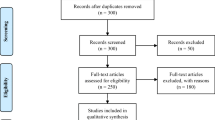Abstract
In this chapter, the author mainly addresses the differences between France and Anglo-Saxon countries regarding two axes. First he shows the differences in terminology of the word ‘professional’ and related terms, then he highlights that their respective approaches of human and organisational factors in Occupational Health & Safety originate from their own specific history.
You have full access to this open access chapter, Download chapter PDF
Similar content being viewed by others
Keywords
Overall, the FonCSI seminar held on 12 November 2015 in ChantillyFootnote 1 was well structured and organised. The speakers were captivating and the topics presented were relevant to today’s industrial challenges. It was rewarding to be a part of rich and mature exchanges on subjects that have real and practical implications in the day-to-day management of industrial OH&S.Footnote 2
Discussions around definitions, particularly by Professor Rhona Flin on the use of the term “professional” when referring to the safety function, highlighted that on an international stage, we may sometimes assume we speak the same language of OH&S but in fact we would benefit from defining in more detail some of the terminology we freely use in passionate conversations on our vocational topics. This aspect of the seminar was, for me, one of the richest contribution; that experts (“professionals”) in the field of OH&S, but belonging to different national cultures, could hold discussions with so much in common, and yet a handful of critical definitions could make such a big difference in perceptions, understanding and even connectivity between the parties holding the discussions. In the world of multi-national organisations and particularly with respect to OH&S training, this may be an important aspect of communication we overlook. The practical simulation training presented by Professor Vincent Boccara was a positive and refreshing approach to OH&S training which would overcome communication barriers like these, as well as those self-imposed between hierarchical levels of an organisation (e.g. Supervision and Management or Workers and Supervision).
Based on observations made while studying Industrial Risk at La Sorbonne University, following a period of twelve years working in an English setting within a Swiss Company, I propose, as a thesis for this paper, that there have been apparently different approaches to OH&S adopted by experts from the English world and the French world.
At the risk of over-simplifying, it is my belief that the English approach to OH&S, greatly influenced by a number of historical catastrophes such as Piper Alpha, was originally driven by structured organisational processes and systems, having matured from a prescriptive (regulator driven) to a risk-based approach post-Cullen enquiry. This called for organisations to demonstrate, through OH&S experts and through Safety Cases, that the risks in work tasks had been mitigated as much as was reasonably practicable. Until more recently, the human in this approach, had been largely passive apart from a requirement to apply the training received. Human factor engineering and, more recently, behavioural psychology is offering the current direction for development so that the paradox of human excellence and fallibility may be taken into account in the design of Work, in particular when involving machines and equipment and moreover when the work tasks affect other human beings; for example, in the mass transportation, restauration or medical fields, because of the potentially catastrophic consequences of an incident.
The French Approach has evolved from the Napoleonic era, when the labour code was created to protect the children and women working and dying in great numbers in chemical and mechanical factories, while the men were either working the land in the fields or at war. It was driven by an assessment of the physical limitation of humans and the subsequent adaptation of the work tasks to those humans by engineers, and has now evolved into the scientific (physical, mental, psychological) human factors engineering where the French and the English approaches finally meet.
The FonCSI seminar on 12 November was, for me, a fantastic modern meeting place with additional views from Italy, Netherlands, Belgium and Norway. The potential to share such international experience can only help to create improvement by combining our approaches to OH&S, shared and illustrated through diverse lessons learnt from industry and academia.
This leaves one question for future events: are we casting the net wide enough to learn from and engage with the emerging industrial nations in the Middle East, India, Asia, Africa and South America?—language permitting!
Notes
- 1.
The two-day international workshop mentioned in the preface and highlight of the project that led to this book (editors’ note).
- 2.
Occupational Health & Safety (editors’ note).
Author information
Authors and Affiliations
Corresponding author
Editor information
Editors and Affiliations
Rights and permissions
Open Access This chapter is licensed under the terms of the Creative Commons Attribution 4.0 International License (http://creativecommons.org/licenses/by/4.0/), which permits use, sharing, adaptation, distribution and reproduction in any medium or format, as long as you give appropriate credit to the original author(s) and the source, provide a link to the Creative Commons license and indicate if changes were made.
The images or other third party material in this chapter are included in the chapter’s Creative Commons license, unless indicated otherwise in a credit line to the material. If material is not included in the chapter’s Creative Commons license and your intended use is not permitted by statutory regulation or exceeds the permitted use, you will need to obtain permission directly from the copyright holder.
Copyright information
© 2018 The Author(s)
About this chapter
Cite this chapter
Delattre, PA. (2018). A Critique from Pierre-Arnaud Delattre. In: Bieder, C., Gilbert, C., Journé, B., Laroche, H. (eds) Beyond Safety Training. SpringerBriefs in Applied Sciences and Technology(). Springer, Cham. https://doi.org/10.1007/978-3-319-65527-7_5
Download citation
DOI: https://doi.org/10.1007/978-3-319-65527-7_5
Published:
Publisher Name: Springer, Cham
Print ISBN: 978-3-319-65526-0
Online ISBN: 978-3-319-65527-7
eBook Packages: EngineeringEngineering (R0)




